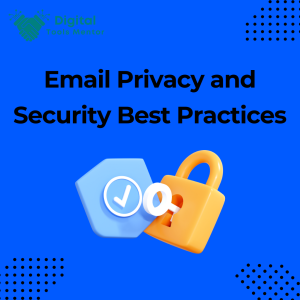Constant Contact Tutorial 2025: A Step by Step Guide
In the digital age, email marketing remains a cornerstone of business communication and marketing strategies, evolving continuously to meet the dynamic needs of consumers and marketers alike. Amidst a plethora of tools designed to enhance email marketing campaigns, Constant Contact emerges as a leading platform, renowned for its comprehensive features, user-friendly interface, and robust support system. In 2025, as businesses of all sizes navigate the complexities of digital marketing, the importance of leveraging a powerful email marketing tool like Constant Contact has never been more critical. Email marketing, with its unparalleled reach and ROI, plays a pivotal role in building relationships, driving sales, and enhancing brand visibility. In a landscape crowded with fleeting trends and ever-changing algorithms of social media, email marketing offers a direct and personalized channel of communication with your audience, ensuring your message is heard loud and clear. Recognizing the potential hurdles and the learning curve associated with mastering a sophisticated platform, this blog aims to provide a comprehensive step-by-step tutorial on using Constant Contact effectively in 2025. Whether you’re a small business owner taking your first steps into email marketing, or a seasoned marketer looking to refine your strategy with advanced techniques, this guide is designed to walk you through every aspect of Constant Contact, from setting up your account to analyzing campaign performance. Let’s dive into the Constant Contact tutorial 2025 and unlock the full potential of your email marketing campaigns.
Getting Started with Constant Contact
Embarking on your email marketing journey with Constant Contact is a straightforward process, designed to get you up and running with minimal fuss. Here’s how to kickstart your experience:
Sign-Up Process
- Visit the Constant Contact Website: Start by navigating to the Constant Contact homepage. Here, you’ll find an overview of the services offered and the various plans available.
- Choose Your Plan: Constant Contact offers different subscription plans tailored to meet a variety of needs and budgets. Select the one that best fits your business size and marketing goals. If you’re unsure, look for any free trial options that allow you to test the waters before committing.
- Create Your Account: Click the sign-up button to begin creating your account. You’ll be prompted to enter basic information, such as your name, email address, and a password. Some plans might also require billing information, but rest assured, most initial sign-up processes include a free trial period.
- Confirm Your Email: After submitting your account details, you’ll receive an email from Constant Contact asking you to confirm your email address. Click the link provided to activate your account.
Dashboard Overview
Upon logging in, you’ll be greeted by the Constant Contact dashboard, your central hub for all email marketing activities. Let’s break down the key areas and tools at your disposal:
- Home: The home tab gives you a quick snapshot of your recent activities and campaign performance metrics, offering insights at a glance.
- Campaigns: Here is where the magic happens. The campaigns section allows you to create, manage, and send your email marketing campaigns. You’ll find options to use templates, draft emails from scratch, and view past campaigns.
- Contacts: Managing your email list is crucial for effective email marketing. The contacts section provides tools for importing, organizing, and segmenting your email list, ensuring your messages reach the right audience.
- Reporting: After sending out campaigns, you’ll want to know how they’re performing. The reporting tab offers detailed analytics on open rates, click-through rates, and more, allowing you to measure success and make data-driven decisions.
- Library: Constant Contact offers a library for storing images and documents, making it easy to add visuals to your emails. This centralized resource simplifies the process of creating visually appealing emails.
- Integrations: To enhance functionality, the integrations tab allows you to connect Constant Contact with other tools and platforms you might be using, such as social media, CRM systems, and e-commerce platforms.
Familiarizing yourself with these key areas of the Constant Contact dashboard will set a solid foundation for your email marketing efforts. With a user-friendly interface and a wealth of tools at your fingertips, you’re well-equipped to launch successful email campaigns that engage and convert.
Building Your Email List
A robust email list is the backbone of successful email marketing. Constant Contact simplifies the process of building and managing your list with tools designed for efficiency and effectiveness. Here’s how to get started:
Importing Contacts
- Prepare Your Contact List: Before importing, ensure your contacts are organized in a spreadsheet or a supported file format (e.g., .csv, .xlsx). Include essential details like email addresses, names, and any other relevant information you wish to use for segmentation.
- Navigate to the Contacts Section: Log into your Constant Contact dashboard and click on the “Contacts” tab. Here, you’ll find options to add or import your contacts.
- Select Import Options: Choose how you’d like to import your contacts. You can upload a file, copy and paste contacts, or even import directly from other services or integrations you have connected to your Constant Contact account.
- Upload Your File or Enter Your Contacts: Follow the prompts to upload your contact list file or paste your contacts. Constant Contact will guide you through mapping the fields in your file (like email address, first name, last name) to the corresponding fields in your Constant Contact account.
- Organize and Segment: After importing, consider organizing your contacts into segments based on criteria like interests, location, or past engagement. This will enable you to tailor your email campaigns for better personalization and effectiveness.
Creating Sign-Up Forms
- Access the Sign-Up Forms Tool: From your Constant Contact dashboard, locate the sign-up forms section. Here, you’ll find options to create various types of forms, including pop-ups, embedded forms, and landing pages.
- Choose a Form Type: Decide on the form type that best suits your needs. Embedded forms integrate seamlessly into your website, while pop-up forms are great for capturing attention and landing pages can be used for special promotions or content.
- Customize Your Form: Use the form builder to add fields and customize the design of your form. Ensure it matches your brand’s look and feel by adjusting colors, fonts, and images. Clearly state the benefits of signing up, like exclusive offers, tips, or newsletters, to encourage more sign-ups.
- Set Up Form Settings: Configure settings such as the welcome message new subscribers will receive and decide which list or segment the new contacts should be added to.
- Integrate the Form on Your Platform: Once your form is ready, you’ll be given a code snippet (for embedded forms) or a link (for landing pages). For embedded forms, paste the code into your website’s HTML where you want the form to appear. For landing pages, share the link on your social media profiles or in your website navigation.
- Monitor and Adjust: Keep an eye on the performance of your sign-up forms. If certain forms are not performing well, consider adjusting the placement, design, or call to action.
By carefully importing your contacts and strategically placing sign-up forms across your digital platforms, you can steadily grow a healthy email list. This list will serve as a valuable asset for your email marketing campaigns, enabling you to reach and engage your audience effectively with Constant Contact.
Crafting Your First Email Campaign
Creating your first email campaign with Constant Contact is an exciting step towards engaging with your audience directly. With an array of customizable templates and user-friendly tools, you’re set to design emails that not only look professional but also resonate with your subscribers. Here’s how to craft an impactful email campaign:
Choosing a Template
- Access the Template Gallery: Navigate to the “Campaigns” section in your Constant Contact dashboard and click on “Create” to start a new email campaign. You’ll be directed to the template gallery, which features a variety of professionally designed templates for different purposes and industries.
- Select a Template That Matches Your Goal: Whether you’re announcing a new product, sending a newsletter, or promoting a sale, choose a template that aligns with your campaign’s objective. Look for a layout that supports the type of content you plan to include, such as text blocks, images, or buttons.
- Customize Your Template: Once you’ve selected a template, use the drag-and-drop editor to tailor it to your brand. You can adjust colors, fonts, and images to match your brand identity. Remember, consistency in your visual branding helps build recognition and trust among your audience.
Adding Content
- Craft a Compelling Subject Line: Your subject line is the first impression subscribers get of your email. Make it engaging and clear, summarizing the email’s value proposition to encourage opens.
- Write Concise and Engaging Text: Keep your message concise and to the point, focusing on delivering value to your readers. Break up text into short paragraphs or bullet points to improve readability.
- Incorporate High-Quality Images: Visuals can significantly increase engagement. Use high-quality, relevant images to complement your text and convey your message more effectively. Ensure images are optimized for email to avoid slow loading times.
- Include Clear Calls-to-Action (CTAs): Your email should have a clear goal, whether it’s driving traffic to your website, promoting a sale, or encouraging feedback. Use buttons or links as CTAs, placing them strategically within your email to guide subscribers towards the desired action.
Personalization Techniques
- Use Subscriber Data: Leverage the information you have about your subscribers, such as their names, to personalize the email greeting. This simple touch can make emails feel more personal and engaging.
- Segment Your List: Send targeted emails based on subscriber behavior, interests, or demographic information. Tailoring content to different segments can significantly improve engagement and conversion rates.
- Dynamic Content: Some advanced features allow you to include dynamic content in your emails, which changes based on the recipient’s data. This could be product recommendations based on past purchases or content tailored to the subscriber’s location.
By thoughtfully selecting and customizing your template, crafting engaging content, and utilizing personalization techniques, you can create effective email campaigns that captivate your audience. Remember, the key to successful email marketing is delivering relevant, valuable content that meets your subscribers’ needs and interests. With Constant Contact’s tools at your disposal, you’re well on your way to achieving just that.
Segmenting Your Audience
Effective email marketing isn’t just about sending messages; it’s about sending the right message to the right person at the right time. Segmenting your audience allows you to tailor your communications based on specific subscriber characteristics, leading to higher engagement and conversion rates. Here’s how to leverage Constant Contact’s tools to segment your audience and create more targeted campaigns.
Creating Segments
- Identify Segmentation Criteria: Begin by determining the basis for segmenting your audience. Common criteria include subscriber behavior (such as past purchases or email engagement), preferences (indicated through surveys or sign-up forms), and demographics (like age, location, or job title). The more relevant your criteria, the more personalized your campaigns can be.
- Use Constant Contact’s Segmentation Tools: Navigate to the “Contacts” section in your dashboard, where you’ll find options to create and manage segments. Constant Contact allows you to segment your list directly based on the data you’ve collected, including custom fields you may have added to your contact list.
- Create Your Segments: For behavior-based segments, look at engagement metrics like open rates and click-through rates from past campaigns. For demographic or preference-based segments, use the information provided by your subscribers at sign-up or gathered through surveys. You can create as many segments as you need to effectively target different groups within your audience.
Targeted Campaigns
- Design Campaigns for Each Segment: With your segments defined, create email campaigns tailored to each group’s specific needs, interests, or behaviors. This might involve customizing the message, offer, or call-to-action to resonate more deeply with the segment’s characteristics.
- Personalize Your Content: Beyond just addressing subscribers by their first name, personalize content based on the segment’s unique attributes. For example, send product recommendations based on past purchases or customize the email copy to reflect the recipient’s location or industry.
- Test and Refine: Use A/B testing within your segments to determine which messages, subject lines, or design elements perform best. Constant Contact provides tools to easily conduct these tests, helping you refine your approach and improve the effectiveness of your campaigns over time.
- Monitor Performance by Segment: Constant Contact’s reporting tools allow you to analyze campaign performance at the segment level. Assess metrics like open rates, click-through rates, and conversion rates to understand how well your targeted campaigns are resonating with each segment.
- Adjust Segments as Needed: As your business evolves and you gather more data on your subscribers, revisit and adjust your segments. Subscriber interests can change, and keeping your segments up-to-date ensures your campaigns remain relevant and engaging.
Segmentation is a powerful strategy in email marketing, enabling you to communicate more effectively with your audience by acknowledging their individual preferences and behaviors. By taking advantage of Constant Contact’s segmentation tools, you can create targeted campaigns that lead to better engagement, stronger relationships, and ultimately, higher conversion rates.
Automating Email Campaigns
Automation in email marketing not only saves time but also ensures your subscribers receive timely, relevant content that nurtures their journey from first contact to loyal customer. Constant Contact offers robust tools for setting up autoresponders and creating automated email series. Here’s how to utilize these features to keep your audience engaged and move them smoothly through your marketing funnel.
Setting Up Autoresponders
Autoresponders are emails automatically sent in response to specific actions or milestones. Here’s how to set them up:
- Navigate to the Automation Section: Within your Constant Contact dashboard, find the “Automation” tab. Here, you’ll see options for creating various types of automated emails.
- Choose Your Trigger: Select the type of autoresponder you want to create. Common triggers include new subscriber sign-ups, birthdays, and anniversaries. Each trigger corresponds to a different subscriber action or data point in your contact list.
- Customize Your Email: Once you’ve selected a trigger, you’ll be prompted to design your email. Use Constant Contact’s drag-and-drop editor to create an engaging message that resonates with the recipient. For a new subscriber welcome email, for example, you might include a brief introduction to your brand and a special offer.
- Set Email Details: Specify the subject line, from name, and other settings. It’s crucial to make the subject line compelling to ensure the email gets opened.
- Define the Timing: For triggers like birthdays or anniversaries, set the timing of the email based on the date associated with each contact. For new subscriber emails, decide how soon after signing up the email should be sent.
- Activate Your Autoresponder: Review your settings and activate the autoresponder. It will now automatically send based on the triggers you’ve set.
Creating Automated Series
Automated email series, or drip campaigns, are a sequence of emails delivered over time to nurture leads. Here’s how to create an effective series:
- Plan Your Series: Determine the goal of your series and the journey you want to take your subscribers on. Each email in the series should have a clear purpose, whether it’s educating the subscriber, nurturing a lead, or encouraging a purchase.
- Create a New Automated Series: In the “Automation” tab, select the option to create a new series. Give your series a name that reflects its purpose.
- Design Each Email: Build each email in the series, ensuring that the content flows logically from one message to the next. The first email might welcome the subscriber to the series, followed by emails that gradually provide more in-depth information or offers.
- Set the Timing and Order: Decide the interval between emails. Timing can vary based on your campaign goals but should be spaced out enough to not overwhelm subscribers while keeping them engaged.
- Segment Your Audience: Target the series to specific segments of your audience to ensure relevance. You might have different series for different types of customers or based on how subscribers joined your list.
- Launch and Monitor Your Series: Activate your automated series and monitor its performance. Use Constant Contact’s analytics to track open rates, click-through rates, and conversions, and adjust your series as needed based on these insights.
By effectively setting up autoresponders and creating automated email series, you can maintain constant, relevant communication with your subscribers. This not only enhances the subscriber experience but also fosters stronger relationships and drives conversions, making automation a key component of a successful email marketing strategy.
Analyzing and Optimizing Campaigns
In the realm of email marketing, the work doesn’t end with sending out campaigns. To truly harness the power of your efforts, diving into analytics and employing optimization strategies like A/B testing are crucial steps. Constant Contact equips you with comprehensive reporting tools and features for A/B testing, ensuring you can measure, understand, and enhance your email campaigns for maximum impact.
Understanding Reports
Constant Contact’s reporting tools offer a wealth of data about your email campaigns, providing insights into how subscribers interact with your messages. Here’s how to make the most of these analytics:
- Access Your Reports: Navigate to the “Reports” section in your Constant Contact dashboard. Here, you’ll find performance metrics for each of your campaigns.
- Key Metrics to Monitor:
- Open Rate: Indicates the percentage of recipients who opened your email. This metric helps gauge the effectiveness of your subject lines and the overall interest in your content.
- Click-Through Rate (CTR): Shows the percentage of recipients who clicked on one or more links in your email. A high CTR suggests that your message content is relevant and engaging to your audience.
- Bounce Rate: The rate at which your emails were undelivered. Monitoring bounce rates can help you maintain a healthy email list by identifying and removing invalid addresses.
- Unsubscribe Rate: Tracks the percentage of recipients who opted out of your email list after receiving a campaign. While some unsubscribes are normal, a high rate may indicate issues with content relevance or frequency.
- Analyze and Act: Use these metrics to identify strengths and areas for improvement in your campaigns. For instance, if you notice low open rates, consider revising your subject lines for future emails. If your CTR is low, evaluate the relevance and placement of your calls-to-action.
A/B Testing
A/B testing, also known as split testing, is a method of comparing two versions of an email to see which performs better. Constant Contact allows you to test different elements of your emails, such as subject lines, content, and send times. Here’s how to conduct an A/B test:
- Choose the Element to Test: Decide on one variable to test at a time, such as the subject line. This ensures that any performance difference can be attributed to that specific change.
- Create Your Variations: Develop two versions of your email — “A” and “B” — each with a different iteration of the element you’re testing. For example, if testing subject lines, create two emails identical in every way except for the subject line.
- Set Your Sample Size and Duration: Select a portion of your email list to receive the test. Constant Contact will send version A to half of this group and version B to the other half. Also, decide how long the test will run before determining a winner.
- Analyze the Results: After the test concludes, review the performance metrics of each version. The version with the higher open rate, CTR, or other relevant metric is the winner.
- Apply Your Findings: Use the insights gained from your A/B test to optimize future campaigns. If a particular subject line style consistently outperforms another, for example, adopt this style more broadly in your email marketing strategy.
By regularly analyzing campaign performance and conducting A/B tests, you can iteratively improve your email marketing efforts. Constant Contact’s tools for analytics and optimization empower you to make data-driven decisions, enhancing the effectiveness of your campaigns and fostering deeper engagement with your audience.
Advanced Features and Integrations
Constant Contact is more than just an email marketing platform; it’s a comprehensive tool equipped with advanced features and integrations that can significantly enhance your digital marketing efforts. From event management to surveys, and seamless integration with CRM systems, e-commerce platforms, and other third-party tools, let’s dive into how you can leverage these functionalities to elevate your marketing strategy.
Exploring Advanced Tools
- Event Management: Constant Contact offers an event management tool that simplifies organizing, promoting, and managing events. You can create custom registration forms, track registrations, send event-related emails, and even collect payments. This feature is particularly useful for businesses hosting webinars, workshops, or any in-person events, as it integrates directly with your email marketing campaigns for cohesive communication.
- Surveys and Polls: Gathering feedback from your audience is crucial for improving your products, services, and overall customer experience. Constant Contact’s survey and poll feature allows you to create custom questionnaires directly within the platform. Use this tool to engage with your audience, collect valuable insights, and even segment your contacts based on their responses for more targeted follow-up communications.
- Dynamic Content: Enhance personalization in your campaigns with dynamic content. This feature enables you to change the content of your emails based on the recipient’s interests, behaviors, or demographics. For instance, you can show different product recommendations or messages to different segments within the same email, making your communications highly relevant and engaging.
Integrating with Other Tools
- CRM Integration: Connecting Constant Contact with your Customer Relationship Management (CRM) system can streamline your marketing and sales processes. This integration allows for the automatic sync of contact information and engagement data between platforms, enabling you to maintain up-to-date lists and gain deeper insights into your contacts’ behaviors.
- E-commerce Platforms: For online retailers, integrating Constant Contact with your e-commerce platform can drive sales and enhance customer relationships. This integration enables you to send targeted campaigns based on purchase history, abandoned cart reminders, and post-purchase follow-ups, all of which can significantly boost your online store’s performance.
- Other Third-Party Tools: Constant Contact integrates with a wide array of third-party applications and services, from social media management tools to accounting software. These integrations help create a more efficient workflow, allowing you to extend the capabilities of your email marketing efforts and connect with your audience across multiple channels.
- How to Integrate: To integrate Constant Contact with other tools, start by exploring the Integrations section within your dashboard. Here, you’ll find a list of available integrations and instructions for connecting them to your account. Most integrations require you to log in to the third-party service and authorize the connection, enabling a seamless data flow between platforms.
By taking advantage of Constant Contact’s advanced features and integrations, you can unlock new possibilities for your email marketing campaigns and broader digital marketing strategy. These tools not only save you time but also provide you with the insights and capabilities needed to create more effective, personalized, and engaging campaigns that resonate with your audience.
Tips and Best Practices for Email Marketing Success with Constant Contact
Email marketing remains a powerful tool for building relationships with your audience, driving sales, and enhancing brand awareness. However, to fully leverage the potential of email marketing with Constant Contact, it’s crucial to follow best practices and avoid common pitfalls. Here are key strategies and tips to help you maximize your email marketing efforts.
Email Marketing Strategies
- Know Your Audience: Understanding who your subscribers are allows you to tailor your content to meet their needs and interests. Use segmentation and personalization features in Constant Contact to deliver relevant messages that resonate with different segments of your audience.
- Craft Compelling Subject Lines: Your subject line is the first impression your email makes. Make it catchy, clear, and concise to improve open rates. Use A/B testing to find out which subject lines work best for your audience.
- Design for Mobile: With the majority of emails now opened on mobile devices, ensure your emails are mobile-friendly. Constant Contact offers responsive templates that look great on any device. Remember to keep your most important content and call-to-action (CTA) above the fold.
- Use Clear Calls-to-Action: Every email should have a clear objective, whether it’s to drive traffic to your website, promote a sale, or increase engagement on social media. Make your CTAs prominent and persuasive to encourage action.
- Optimize Send Times: Timing can significantly impact the success of your email campaigns. Constant Contact provides insights into when your emails are most likely to be opened. Experiment with different send times to find the optimal window for your audience.
- Regularly Clean Your Email List: Maintain email list hygiene by regularly removing inactive subscribers and correcting or removing invalid email addresses. This practice helps improve your deliverability and engagement rates.
Avoiding Common Pitfalls
- Avoid Spam Triggers: Be mindful of language that might trigger spam filters, such as excessive use of caps, words like “free,” “guarantee,” or “no risk.” Keep your email content clear, honest, and straightforward to ensure it reaches your subscribers’ inboxes.
- Don’t Overwhelm Your Subscribers: Sending too many emails can lead to subscriber fatigue, increasing the likelihood of unsubscribes. Find a balance in your email frequency that keeps subscribers informed and engaged without overwhelming them.
- Ensure Compliance with Email Regulations: Stay compliant with laws like the CAN-SPAM Act and GDPR by including an easy-to-find unsubscribe link in every email, using accurate sender information, and obtaining consent before adding new contacts to your list.
- Monitor and Adjust Based on Analytics: Constant Contact provides detailed reports on your email campaigns. Use this data to monitor performance and adjust your strategy accordingly. Pay attention to metrics like open rates, click-through rates, and conversion rates to understand what works and what doesn’t.
- Test and Learn: Continuously test different elements of your emails, from subject lines to content and design. Use Constant Contact’s A/B testing feature to make data-driven decisions and continually refine your email marketing strategy.
By implementing these strategies and best practices, you can effectively use Constant Contact to connect with your audience, achieve your marketing goals, and drive meaningful results for your business. Remember, the key to successful email marketing is continuous learning and adaptation based on insights and performance data.
Read 7 Best Constant Contact Alternatives in 2025
Conclusion: Elevating Your Email Marketing Game with Constant Contact
Throughout this comprehensive tutorial, we’ve journeyed through the essential steps and strategies for maximizing your email marketing efforts using Constant Contact. From the initial setup and building a robust email list to crafting engaging campaigns, segmenting your audience, and harnessing the power of automation, we’ve covered the key components that can transform your email marketing strategy. We delved into the advanced features and integrations that make Constant Contact a versatile tool for marketers, alongside sharing best practices and tips to enhance your campaigns’ effectiveness and avoid common pitfalls.
The digital marketing landscape is ever-evolving, and with Constant Contact at your fingertips, you’re well-equipped to navigate these changes and connect with your audience in meaningful ways. The strategies and insights shared here are designed to empower you, whether you’re new to email marketing or looking to refine your existing efforts.
Take Action and Transform Your Email Marketing
Engage with the Community
We’d love to hear from you! Whether you’re sharing your success stories, the challenges you’ve encountered, or any questions that arose as you explored Constant Contact, your insights enrich our community. Dive into the comments section below to share your experiences or seek advice. Together, we can learn, grow, and achieve email marketing excellence.
Remember, the journey to email marketing success is ongoing. With Constant Contact’s robust features, intuitive design, and the strategies outlined in this tutorial, you have everything you need to create impactful, engaging email campaigns that resonate with your audience. So why wait? Start implementing these strategies in your own Constant Contact campaigns today and watch your digital marketing efforts soar to new heights.




